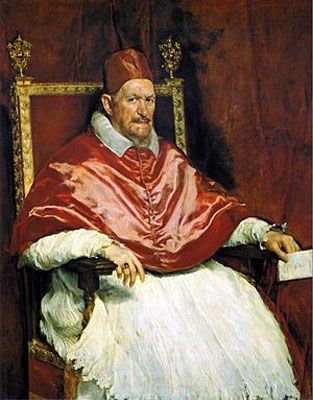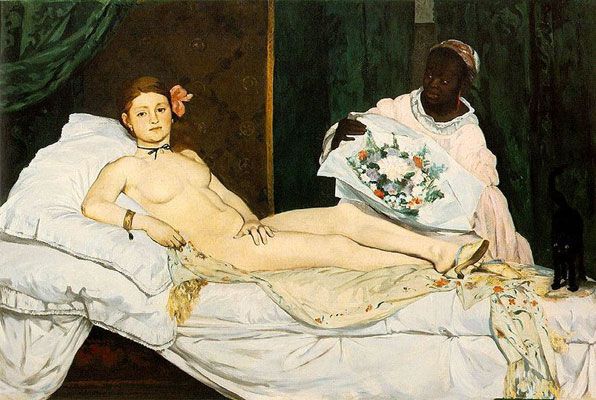Summary of Titian
Titian was one of the greatest Renaissance painters, combining High Renaissance and Mannerist ideas to develop a style which was well ahead of his time. He dominated Venetian art with a creativity that allowed the city to rival the previously acknowledged artistic centers of Florence and Rome and he painted some of the most important and eminent personalities of the time including Charles V, Holy Roman Emperor, Pope Paul III, Philip II of Spain, and Henry III of France. As well as portraiture, he also painted a range of religious and mythological subjects, sometimes on a vast scale. During a long and prolific career his work developed from traditional Renaissance imagery to increasingly energetic canvases which rejected balanced compositions and replaced them with asymmetry and dynamic subjects. Towards the end of his life, his work became darker and more impressionistic. He had a huge impact on his contemporaries and his canvases can be seen as forerunners of the emotional drama of Baroque art as well as influencing later innovators.
Accomplishments
- Titian was most famous for his bold utilization of color, particularly in his earlier work, and he achieved this through seeking out rare pigments and using them in their richest and most saturated form, as well as by carefully balancing each color with those alongside it to create a harmonious overall impression. He also concentrated on the effect of light on color harnessing lighting effects, including chiaroscuro, to emphasize contrasting hues. Through this focus he created the distinction between Venetian and Florentine art, Renaissance artists in Florence and Rome believed that line was paramount, the Venetian Renaissance style was defined by color and led by Titian.
- The artist's later work is characterized by loose brush strokes and an expressive application of paint and it is likely that, at times, he used his fingers as well as brushes to apply and blend paint. In painting in this manner, Titian created a fluidity that lent a greater sense of movement and emotion to his work and was unique amongst his peers.
- Titian worked almost exclusively in oil, which was a new technique at the start of his career. The medium allowed him to build up a series of glazes to depict the appearance and texture of the human form with an accuracy, delicacy, and softness which was innovative. This realism was particularly relevant in his renderings of female nudes which were unusually sexually suggestive for the period and which seem to reflect Titian's own desires.
The Life of Titian
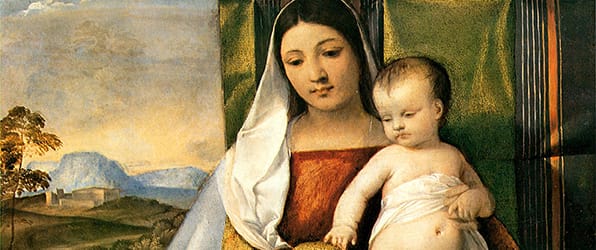
Titian’s artistic career began in Venice, making him one of the first, and most prolific Renaissance masters to work with oil paint. He went on to become the official painter of King Philip II of Spain, and was a renowned artist (in his own lifetime) across all of Europe, always seeking to capture the “essential character” of whatever he painted.
Important Art by Titian
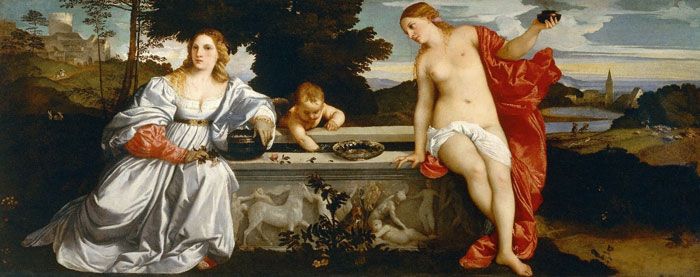
Amor Sacro and Amor Profano
Set in a bucolic landscape, two women, apparently drawn from the same model, are posed by a water trough, while its water is stirred by a winged Eros (or possibly a putto). The painting is rich in symbolism and iconography although there is a lack of consensus amongst critics about its meaning and even the title of the painting may not be original as it was not recorded until 1693. The composition of the picture contains elements found in the work of Giorgione whose style had a significant influence on Titian at the beginning of his career.
The woman to the left is dressed in wedding attire and may represent carnal love and beauty. In contrast, the nude is usually read as spiritual love, a symbol of simplicity and purity. The position of Eros, at the center of the two, therefore, may indicate the point of mediation between spiritual and carnal desires.
The coat of arms on the trough belongs to the family of Niccolò Aurelio, who later became Grand Chancellor of Venice. In May of 1514 he married Laura Bagarotto, daughter of the jurist Bertuccio Bagarotto who had been executed some months before the wedding on charges of betraying the Serenissima Republic. It is probable that the painting was commissioned to celebrate the marriage. It has been suggested that the relief design on the front of the trough symbolizes life and death, inviting the newly wed Laura, to overcome the sorrow for the loss of her father and flourish in marital love, both spiritual and physical. Alternative readings for this design include symbolism for the taming of passions or hidden literary references.
oil on canvas - Galleria Borghese, Rome
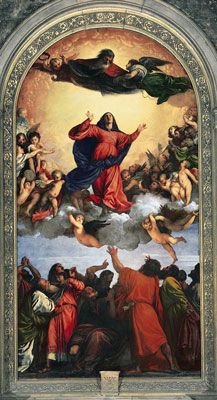
The Assumption of the Virgin
This painting depicts the ascension of the Virgin into heaven. Mary forms the focal point of the composition on a cloud surrounded by putti, where she looks upwards towards God at the top of the image. At the bottom, the apostles raise their arms towards Mary, watching in amazement as the miracle unfolds. The work is divided into three bands and these are physically connected by outstretched hands as well as through the repetition of looks and gestures. The Virgin and two of the apostles wear red robes and this creates a visual pyramid which draws the eye upwards. This structured use of color and composition (particularly the division into thirds) was a key element of many Renaissance paintings.
There is, however, a clear sense of movement and drama within the piece; Mary seems surprised and the apostles are shown in a very agitated state which was in contrast to their usual serene depiction. This is further enhanced by Titian's use of light and shadow to present the apostles as a mass of bodies rather than highlighting their individuality. This demonstrates Titian's awareness of developments in High Renaissance painting in Florence and Rome and his incorporation of these new ideas into his work. Titian also broke with tradition by omitting all details of the landscape in which the image is situated to focus on the events and emotions of the piece, although the sky above the apostles' heads suggests the setting is outside.
This was Titian's first major painting for a church in Venice and consequently his first piece to draw significant public attention. Painted as an altarpiece panel for the Frari church, Titian realized the commission on a large scale with the figures more than life size. The church had a considerable distance between the altar and congregation and the canvas' size and vibrant colors allowed those in the nave of the church to see the image. The painting was designed specifically for the space and the rounded top of the canvas echoes the shape of the choir screen through which most people would view it and the rich golds and yellows around God replicate the light pouring through the windows above the altar, linking the painting closely to it environment. It has been suggested that initial reactions to the work were mixed as viewers were unused to images painted in this more emotional and movement-based style.
oil on board - Basilica di Santa Maria Gloriosa dei Frari, Venice
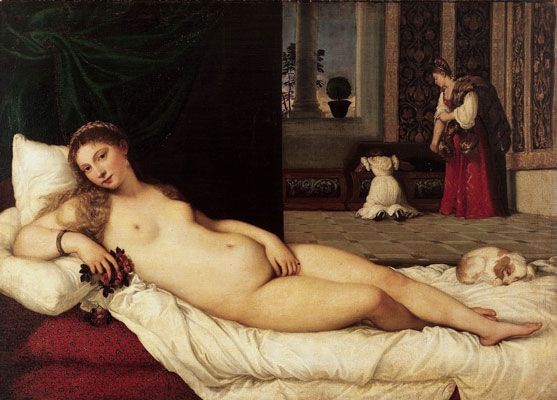
The Venus of Urbino
This painting comes from a long tradition of representations of Venus and it appears to have been based on Giorgione's Sleeping Venus (1510), although Titian's interpretation of the goddess is much more erotic. This sensuality is heightened by the directness of the nude's gaze, her faint smile, and her awareness of the viewer, along with the depiction of her in an opulent domestic environment without the allegorical or mythological symbols traditionally associated with Venus. Whilst Giorgione's nude is idealized and demure, Titian's is realistic and tempting. The warm, light tones of her skin are in contrast to the darker, richer background and the play of light on her body and subtle use of chiaroscuro gives a sculptural quality to the nude. Her curves also contrast with the regularity of architectural elements including the tiled floor, classical column, and green hanging which bisects the scene, highlighting the fertile center of the figure.
There is a significant debate about the interpretation of the image with some arguing that it is a painting of courtesan Angela Zaffetta whilst others have suggested that it is a marriage portrait commissioned by Guidobaldo to celebrate his nuptials to the 10-year-old Giulia Varano in 1534. Evidence for this latter theory comes in the form of the symbolism of the sleeping dog (loyalty) and the two servants at the cassone, a trunk in which a trousseau of clothes given to the bride by her husband's family would be kept.
This image is considered one of the most famous and accomplished examples of the genre and over the centuries the canvas has inspired numerous other works which borrow from the image, utilizing the relaxed pose of the subject, the wider composition, and the suggestive representation of the nude. These include Valazquez's Rokeby Venus (1647-51), Goya's The Nude Maja (c.1797), and The Grande Odalisque (1814) by Ingres. One of the most prominent examples is Olympia by Édouard Manet (1863), a refined pre-Impressionist homage, which sparked a great deal of controversy when it was first displayed. Olympia is lying in the same position as Venus, with eyes that shamelessly meet those of the viewer, however, she is not a goddess, but a prostitute lying in the room in which she works. Manet's painting demonstrates the powerful influence of Titian's Venus in representing fleshy and sensual feminine beauty.
Oil on canvas - The Uffizi Gallery, Florence
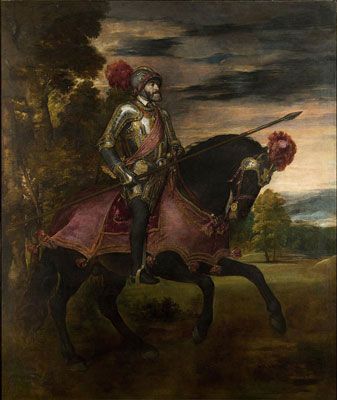
Portrait of Charles V on horseback
This work depicts the Holy Roman Emperor Charles V wearing armor made of gold and silver. The painting was commissioned by Charles' sister, the Queen of Hungary and created to celebrate his victory in the battle of Muhlberg (1547) against the German Protestants. Charles V is represented on horseback, as a true soldier, fighting for Catholicism against the threat of Protestantism. In his right hand he holds a spear, a reference to St. George suggesting military prowess and bravery in fighting a foe. The red of the sash and the horse's caparison symbolize the Catholic faith. In this work Titian generated a powerful and symbolic piece of propaganda aimed at both Charles' subjects and his enemies. In representing the emperor in this way Charles was shown, in victory, as a courageous ruler, an image, perhaps, at odds with his age and failing health.
The representation of a figure on horseback refers to the classical tradition of Roman equestrian monuments, but unlike these Titian does not portray the horse rearing on its hind legs. Instead the horse appears to be setting off at a canter and the confident and easy pose of Charles suggests his horsemanship. In depicting Charles in this manner, Titian created a new genre of portraiture, the equestrian portrait, and in doing so sparked a fashion for nobles and royalty to be depicted on horseback. The impact of this continued into the seventeenth century and examples include Equestrian Portrait of the Duke of Lerma (1603) by Rubens and Equestrian Portrait of Philip IV (c.1635) by Velazquez. Stylistically the painting is mixed, marking a transitionary period in the artist's work. The armor and harness show the detail and realism of Titian's earlier pieces, whilst the landscape and sky are composed of the broader brushstrokes that became prevalent in his art from the 1540s onwards.
Titian was highly sought after as a portraitist, known for his ability to closely capture the character and likeness of his sitters, whilst also producing flattering images which represented the best aspects of them. This subtlety of approach can be seen in some of his other famous portraits including Charles V with a Greyhound (1533), Portrait of Pope Paul III (1543), and Portrait of Pietro Aretino (1545).
Oil on canvas - Museo del Prado, Madrid
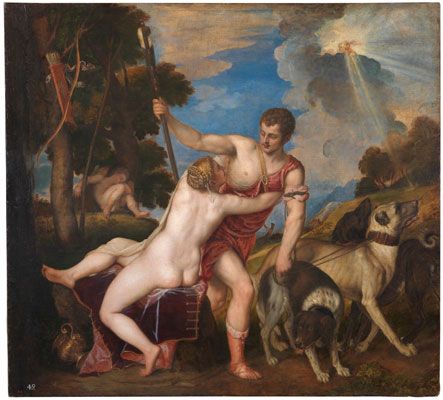
Venus and Adonis
This is the one of several versions of paintings based on this subject that Titian produced and this particular image was created for Philip II of Spain. The subject of the painting is drawn from Ovid's Metamorphoses and the scene depicts the beautiful Adonis leaving the goddess Venus after a night of passion to prepare his dogs for a hunt. He is later killed by an angry boar. The canvas is one of a series of mythological images that Titian painted for the King, which he called 'poesie' (poems) and it was designed to be viewed alongside Danae (1553), which, contrastingly, featured a nude drawn from the front. The depiction of the distended flesh on Venus' bottom was novel in art of the period and was considered extremely erotic.
In the image Venus pleads with Adonis to stay and tries to restrain him (as she has had a premonition of his death). He seems impassive to her entreaties and his dogs strain at their leashes highlighting his impatience to leave. Titian's loose and vigorous brushstrokes add to the sense of energy and movement of the piece. The sleeping form of Cupid in the background is unable to intervene and his bow and arrows hang uselessly in the tree to the left of the painting. In the sky a figure is visible in a chariot, this may either be Venus from later in the same story or a representation of Apollo, symbolizing the dawn. In the original story Venus leaves first, whereas here, Titian inverts the events and portrays Adonis leaving, possibly to add more emotional drama to the subject matter. Parallels can be drawn between the sense of loss that Venus displays in Adonis' departure and the later loss she experiences when he is killed.
Oil on canvas - Museo del Prado, Madrid
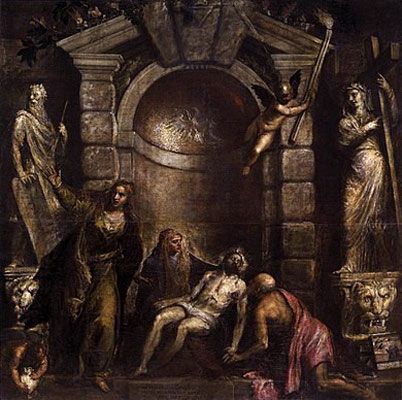
Pieta
One of Titian's last paintings, Pieta was created to hang over his grave and it depicts the Virgin Mary cradling the dead body of Christ, she is accompanied by two further figures, believed to be Nicodemus and Mary Magdalene. It has been suggested that Nicodemus is a self-portrait and that Titian is either viewing his own imminent death in Christ's face or touching his body in the hope of salvation. The painting was unfinished at Titian's death and was completed by Palma il Giovane, although it seems that Giovane's contribution to the image was fairly minimal. The painting is characteristic of Titian's late style in its dark subject matter and rough and expressive rendering. This picture marks the pinnacle of Titian's Mannerist approach and this is exemplified by its non-traditional and unbalanced composition and the use of broken brushstrokes and impasto, techniques that departed from the conventions of Renaissance art, but which were, later, imitated by both Rubens and Rembrandt.
The scene is darkly atmospheric, perhaps indicating Titian's fear of death. It is lit only by shafts of moonlight and a putto carrying a torch and this allows for the use of bold chiaroscuro, with the light particularly illuminating the image of a pelican in piety on the dome of the building, a common symbol for the Passion of Christ and for redemption. In the bottom right-hand corner of the image is a small picture within the picture and this is generally understood to show Titian and his son Orazio in prayer, probably asking to be spared from the plague which was ravaging Venice at the time and eventually killed both of them. The picture partially conceals Titian's coat of arms behind it. The statues of Moses and Sybil which flank the image seem to overwhelm the depiction of the mourners and indicate the frailty of life, a subject of increasing relevance to the artist.
Oil on canvas - Gallerie dell' Accademia, Venice
Biography of Titian
Childhood
Tiziano Vecellio, known as Titian, was born in Pieve di Cadore, a small village in the Alps, the son of Gregorio Vecellio, a wealthy councillor and captain of the Venetian militia in the region. The exact date of his birth is uncertain, however, modern scholars usually set it between 1488 and 1490 on the basis of Ludovico Dolce's Dialogue of Painting, which states that, at the time of the lost frescoes at the Fondaco dei Tedeschi, Titian was not yet 20 years old. At around the age of ten, he moved to Venice with his elder brother Francesco to take an apprenticeship as an artist. He initially studied mosaic at Sebastiano Zuccato's workshop and was later apprenticed to Gentile Bellini. After Gentile's death, Titian went to work for his brother Giovanni Bellini, one of the most important painters in Venice at the time. Here he met Giorgione, a previous apprentice of Bellini's, who helped Titian develop his early style.
Early Years
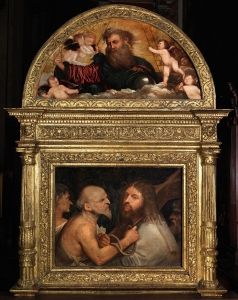
Around 1508 Titian collaborated with Giorgione on the external decoration of the Fondaco dei Tedeschi (the state-warehouse for the German merchants). The relationship between the two masters is still much debated by art historians, with some suggesting an open rivalry and others a close friendship between them. What is certain is that distinguishing between their works in this period is still controversial. For example, the famous, Christ Carrying the Cross (1508-09), hosted in the Scuola Grande di San Rocco, long believed to be Giorgione's work, has recently been attributed to Titian. Although Titian moved away from Giorgione's style in terms of color palette and lighting effects, his influence continues to be apparent in Titian's work for some years.
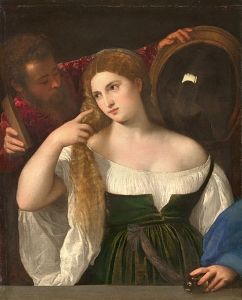
In 1510 Titian launched his independent career in Venice and the following year he travelled to Padua to paint frescoes in the Scuola of St. Anthony. Upon returning, the artist set up an atelier on the Grand Canal, at S. Samuele, administered by his brother Francesco. In 1516, after the death of Bellini, Titian was appointed as the official painter of the Republic of Venice. This appointment was crucial for his artistic career: he enjoyed an annual fee of a hundred ducats and a healthy tax exemption. He held this office for almost 60 years investing his earnings in the lumber trade of his native Cadore, a very important business for the naval industry of the Republic (it is said that Titian became the richest artist that ever lived at the time). In the same year, he completed the Assumption of the Virgin, for the Basilica di Santa Maria Gloriosa dei Frari, a painting that created a huge sensation for its majestic scale and innovative use of color. During this period he also produced several half-length paintings and busts of young women, these included Flora (c. 1515) and Woman with a Mirror (c.1515) as well as a series of small Madonnas for a number of wealthy patrons.
Mature Period
In 1525 Titian married Cecilia Soldani, a woman with whom he already had two sons, Pompeo and Orazio (who later became Titian's assistant), but she died in 1530. Later Titian remarried but little is known of his second wife. Although already well-regarded, Titian's popularity continued to increase, royalty and nobles in Italy and beyond began to seek out his work and he became the principal painter to the Imperial Court. He was also appointed the official painter of King Philip II of Spain and his work was commissioned and bought all over Europe by those wealthy enough to afford it. Towards the end of the 1520s, Titian met Jacopo Sansovino and Pietro Aretino, artists who introduced him to what came to be know as Mannerism and the style began to appear in his paintings from this period onwards. In 1532, shortly after painting a portrait of the emperor Charles V in Bologna, the artist was made a Count Palatine. During this period, Titian began to paint depictions of a reclining Venus and he continued to experiment with this subject matter for the next two decades, examples include The Venus of Urbino (c.1534), Venus and Love (1550), and Venus with an Organist and a Dog (1550).
In the 1540s Titian produced some of his most famous portraits including Portrait of Pietro Aretino (1545), Portrait of Pope Paul III (1543), and Equestrian Portrait of Charles V (1548) and this latter painting established a new genre of grand equestrian portraits. In 1546 he travelled to Rome where he was given the freedom of the city and where he met Michelangelo. From the early 1550s Titian worked regularly with Philip II, producing a series of pictures with mythological themes which he referred to as 'poesie'.
Late Period

From the late-1550s the artist developed a less realistic approach to representation and used wide, loose brushstrokes in his work and his pieces became increasingly abstract throughout the last years of his life. Titian died of the plague on 27 August 1576, shortly before his son Orazio succumbed to the same disease.
The Legacy of Titian
Titian inspired a number of his contemporaries with his Mannerist style, particularly those who formed part of his workshop including Paris Bordone, Bonifazio Veronese, and Polidoro da Lanciano as well as his nephew Marco Vecellio. It has also been suggested that he employed El Greco in his later years influencing his famously vibrant use of color. In 1590 the art theorist Giovanni Lomazzo called Titian, "the sun amidst small stars not only among the Italians but all the painters of the world" and masters such as Rubens, Rembrandt, and Tintoretto show a debt to Titian in terms of composition, color, and use of looser brushstrokes. This influence extended well into the seventeenth century with Marco Boschini writing in 1674, nearly a hundred years after Titian's death, that: "Titian truly was the most excellent of those who painted: because his brushes always gave birth to expressions of life".

Artists returned to Titian in the eighteenth and nineteenth centuries. Sir Joshua Reynolds was so fascinated by his work that he scraped away layers of paint on a canvas that he owned to discover Titian's processes and techniques and both the Neoclassicist, Jean Auguste Dominique Ingres and French Impressionists including Manet drew inspiration from the artist's later, freer canvases. As Eugène Delacroix wrote: "Titian is one of those who are closer to the ingenuity of the ancient [...]. Those who in Titian do not see that the greatest of colorists are in great error: it is indeed, but at the same time is the first of the designers".
Influences and Connections

- Sansovino
- Aretino
Useful Resources on Titian
- Titian: His LifeOur PickBy Sheila Hale
- TitianBy Peter Humfrey
- Titian: Prince of PaintersOur PickBy Susanna Biadene, Mary Yakush
- Titian, Tintoretto, Veronese: Rivals in Renaissance VeniceOur PickBy Frederick Ilchman, David Rosand, Linda Borean, Patricia Brown, and John Garton
- Late Titian and the Sensuality of PaintingBy Sylvia Ferino-Pagden and Giovanna Nepi Scire
- Titian: The Last DaysBy Mark Hudson
- Titian: Catalogue of the National Gallery Exhibition 19 Feb-18 May 2003By Charles Hope
- Titian and His WorldBy Peter Humfrey
- Titian (Basic Art Series 2.0)Our PickBy Ian Kennedy
- Titian’s Icons: Tradition, Charisma, and Devotion in Renaissance ItalyBy Christopher J. Nygren
- Titian’s Lost Last Supper: A New Workshop DiscoveryBy Ronald Moore
- Titian and the Renaissance in VeniceOur PickBy Bastian Eclercy and Hans Aurenhammer
- Titian: And the End of the Venetian RenaissanceBy Tom Nichols
- Titian’s Touch: Art, Magic and PhilosophyOur PickBy Maria H. Loh














